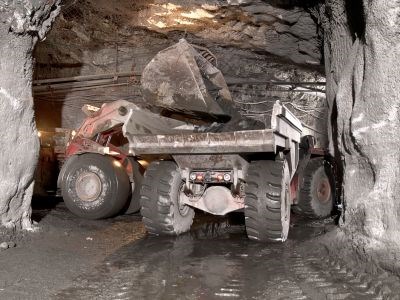At Xstrata Copper's Kidd Creek Mine in Timmins, employee suggestions for improvement have helped increase the life of the mine.
Its 2020 Vision initiative focused on engaging employees in an effort to realize cost savings that might further extend operations.
About 25 per cent of its workforce was interviewed by colleagues and the resulting 1,800 ideas are being put to good use.
“We consolidated and grouped the ideas and the good news was that a lot of the ideas were things we had already started to do and people didn't know about yet, so we were on the right track,” said mine manager Tom Semadeni.
“These ideas validated where we were going.”

This is one of a special series of articles that appeared in our July issue celebrating the 100th anniversary of the incorporation of the City of Timmins.
When the Kidd Metallurgical site closed in late 2010, only some concentrator employees were left. “We realized we needed to help all the employees understand they were part of a new organization because the dynamic was that we had the mine here and the met site concentrator some distance away,” he said.
While focusing on engaging employees more, it was felt if the mine's cost structure could be reduced, the life of the mine could be increased.
Late in 2011, the mine's completion of a $120-million extension at Mine D from 9,100 feet to 9,600 extended operations by at least two years to the first half of 2018.
“We are still working through strategic planning now but it looks like, by being confident in our abilities to reduce our costs, and seeing a view of good metal prices in the future, we are including 2020 into our mine plan as the life of the mine,” Semadeni said.
“It looks like our strategy is paying off and we are realizing our 2020 Vision.
“We can only extract the mineralized material in the ground if you make money so if you reduce your costs a bit, the material you hadn't planned on mining has become viable.”
The mine is the city's largest employer with about 1,000 employees and about 200 contractors. Its No. 4 shaft extends to 9,889 feet below surface and makes it the deepest mine below sea level in the world. It has been operating since the 1960s.
“We probably will not go much deeper since there is still material we can mine above the bottom of the mine and we are focused on that,” he said. “There are also a number of technical constraints we started to hit now to stop us going much deeper.”
The employee engagement exercise has also had an effect on safety results which are improving.
So far, this year has seen a 50 per cent improvement over last year in terms of safety statistics and over the past five years, there has been an 80 per cent improvement.
It has also won an annual safety award the past few years for being the safest mine in Ontario. “We are seeing a spinoff by involving our workforce now,” Semadeni said.
“With them more engaged, there is more job satisfaction and morale appears to be up. We do engagement surveys here which is an important part of our business so we can measure how they perceive the place they work at.”
Kidd Creek Mine has been hiring more employees as opposed to using more contractors to do the work. In the past 18 months, 150 people have been hired and it is planning to hire an additional 50 this year.

Mine Manager Tom Semadeni said employee engagement has benefited the mine operations.
“It really sends a message that we are serious about the longevity of the business and sustainability of it, and that we are willing to hire rather than contract out the work. People like to see that,” he said.
The environment is a big focus for the mine and last year it spent more than $3 million on its environmental infrastructure and this year it expects to spend more than $4.5 million.
“We put a lot of effort into our environmental controls whether it is tailings dams or water treatment equipment,” Semadeni said. “We haven't had an environmental toxic event in more than four years and we are starting to see fish in our discharged waters like rainbow trout. Crayfish and other fish can be found directly where our water is coming out from our water treatment facilities.”
Since its treated water eventually goes into the Mattagami River, the mine is working with the Ministry of Natural Resources to help rebuild the sturgeon population and its the only project of its kind in Ontario.
“I would say the sturgeon were impacted more over the past 100 years by forestry than mining since not a lot of mines put water in that river,” he said. “But we thought it was a good thing for us to do.” 
www.xstratacopper.com 




